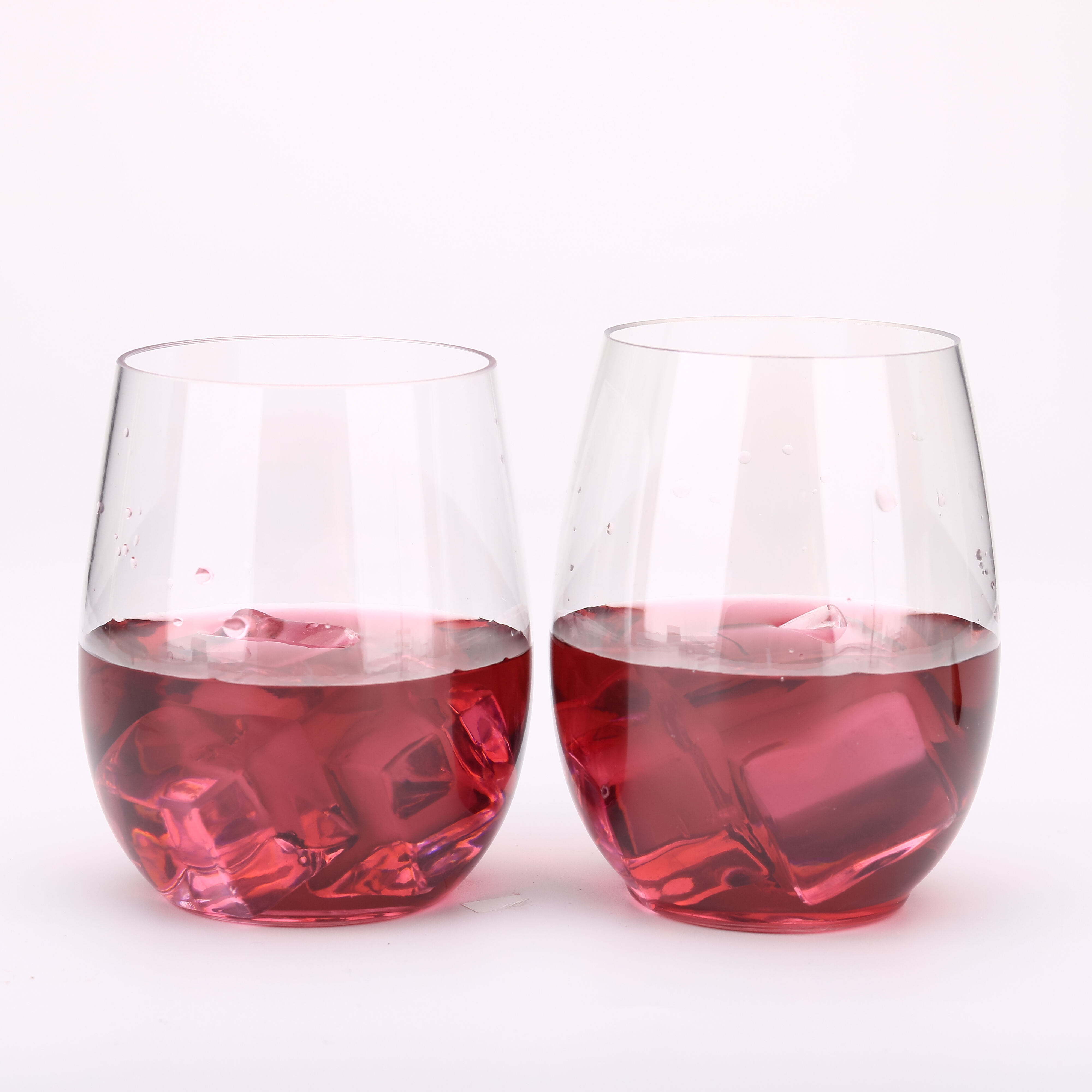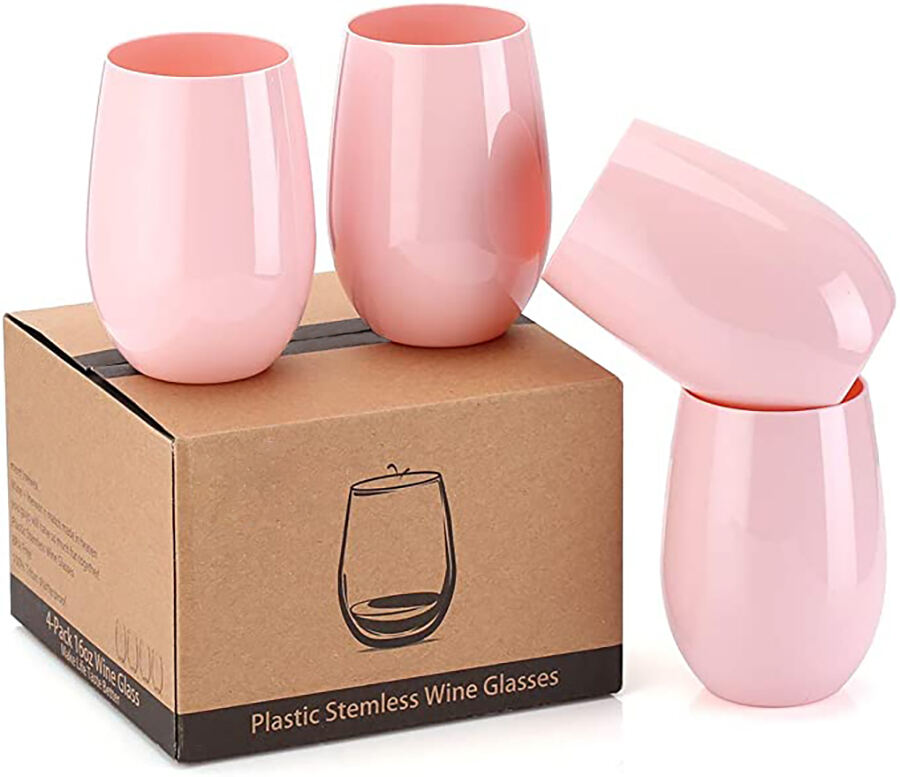Understanding BPA in Plastic Wine Glasses
What Makes BPA a Health Concern?
BPA stands for bisphenol A, and it shows up in all sorts of plastic stuff we use daily. We find it in things meant to hold our food and drinks too, think about those plastic wine glasses at parties. What worries scientists most? Well, this chemical acts kind of like estrogen in our bodies, messing around with how hormones work. Research suggests people exposed to BPA might face various health problems down the road. Some folks have trouble getting pregnant, others gain weight unexpectedly, and there are reports linking it to heart issues as well. New findings point toward something even scarier though the effects build up over years of regular contact. That's why finding BPA in common household items, especially those plastic wine glasses we casually drink from, raises red flags for many health experts these days.
How BPA Leaches into Beverages
BPA tends to seep out of plastic wine glasses into whatever drinks we put in them, and this happens faster when things get hot or contain acids. Think about what happens during normal use too. Plastic wine glasses with BPA in them will release more of this stuff if someone puts them in the dishwasher or accidentally microwaves them. The heat breaks down those chemical bonds holding everything together. And it gets worse over time. Older plastic products just degrade naturally, which means even more BPA leakage occurs as months pass by. People really need to know about these situations where BPA escapes because plastic wine glasses are constantly coming into contact with our food and beverages throughout daily life.


Health Risks of BPA Exposure
Endocrine Disruption and Long-Term Effects
BPA acts as an endocrine disruptor, basically messing with how hormones work in our bodies. When this happens, it can lead to all sorts of problems related to reproduction, including trouble getting pregnant and issues with normal development. Research from Environmental Health Perspectives backs this up, showing just how bad things can get when exposed to BPA over time. Little kids and babies are at special risk here because their systems aren't fully developed yet. Parents need to watch out for where BPA might hide in everyday items around the home. What's really concerning though is that pregnant women pass BPA along to their unborn babies through the placenta. That makes keeping track of exposure levels during pregnancy absolutely essential. Once folks understand what they're dealing with, they start looking at household products differently and take steps to cut down on BPA contact wherever possible.
Microplastics & BPA: A Dual Threat
Microplastics floating around our environment present a real health danger, especially when they team up with BPA. Look at what UC researchers found recently microplastics have basically taken over the food chain, sneaking those nasty chemicals right into our guts through all sorts of contaminated foods and drinks we consume daily. When these two troublemakers join forces, it raises serious red flags about what might happen down the road. Some recent work even hints at possible links between this combo and certain cancers of the digestive system. Think about it most plastic stuff we use every day eventually breaks down into these microscopic bits, which is why so many people are starting to worry about them. We really need to get smarter about how much plastic we're actually exposed to in our daily lives. Fighting back against this double whammy takes action on multiple fronts both what individuals do personally and bigger changes across industries that produce all these plastic products.
Regulatory Standards for BPA-Free Products
EU Ban on BPA in Food Contact Materials
The EU recently put in place strict rules against BPA in any material that touches food, a major win for protecting consumers. Scientists have been warning about BPA dangers for years now, pointing to how it affects our bodies when we're exposed too much. Take this one study funded by the EU itself: they found BPA in nearly every adult tested, way over what EFSA considers safe levels. These results made lawmakers push for better options and stricter checks on manufacturers making sure their products meet standards. What's interesting is that this ban isn't just about BPA anymore. We're seeing regulators pay closer attention to plastics overall, trying to keep people healthy while still letting industry function properly.
FDA Guidelines for Plastic Safety
The FDA in the US has an important job when it comes to keeping track of plastic safety issues, especially around bisphenol A (BPA) in things people buy and use daily. Even though BPA remains permitted for some uses, regulators at the FDA keep looking at fresh research findings as they update their rules over time. Most shoppers tend to go for items marked BPA free these days, but those products still need to meet strict FDA requirements before hitting store shelves. As guidelines change regularly, consumers should stay aware about what's actually safe versus just marketed as such. Keeping up with how regulations evolve helps everyone make better decisions about their health while navigating all the information out there on product safety matters.
Alternatives to Traditional Plastic Drinkware
Tritan Copolyester for Wine & Cocktail Glasses
Tritan copolyester has become something of a go-to option compared to regular plastic drinkware, especially for folks who want something tough yet clear without worrying about BPA exposure. What makes Tritan stand out? Well, it actually holds up in dishwashers and doesn't absorb smells or staining from drinks, which explains why so many bars and restaurants now stock their wine and cocktail glasses with this stuff. The material itself is pretty tough too. We're talking about glasses that survive accidental drops at backyard parties or picnics where normal glassware would shatter into pieces. And let's face it, most Tritan items come stamped with those reassuring BPA-free labels these days. That little tag means a lot to people concerned about what they put in their bodies, giving them confidence that their morning coffee or evening cocktail isn't leaching harmful chemicals while they enjoy their beverage.


Glass and Stainless Steel Options
Looking for something better than those plastics loaded with BPA? Glass and stainless steel stand out as solid options. These materials won't let chemicals seep into what we drink, which matters a lot given all the worries about plastic safety these days. Take glass wine glasses for instance they look great on the table and most people know they can just toss them into the recycling bin after years of use. Stainless steel containers keep drinks at just the right temperature whether hot coffee stays warm or ice cold cocktails remain refreshing. This move away from plastic fits right in with the whole green lifestyle thing going on now. People want to cut down on trash and be kinder to the planet, so switching to glass and metal makes sense both practically and environmentally.
Safe Use of BPA-Free Plastic Wine Glasses
Cleaning Best Practices
Keeping BPA-free plastic wine glasses in good shape means sticking to certain cleaning habits, especially washing them by hand with gentle soap works best. Doing this helps keep the material intact so they last longer. Don't use harsh scrubbing stuff since it creates scratches where germs might hide and shortens how long the glass stays useful. Make sure to check those BPA-free glasses from time to time for cracks or other problems too. People who follow these simple tips generally find their drinkware lasts much longer without compromising safety during regular use.
Avoiding Heat Exposure
BPA-free plastic wine glasses need to stay away from any kind of heat source because when they get too hot, the materials might not be safe anymore. Leaving them out in direct sunlight for long periods or putting them near other heat sources can actually warp their shape over time and possibly release chemicals into whatever's inside. Most people don't realize this but many BPA-free plastics shouldn't go into microwaves or dishwashers at all unless the packaging specifically says otherwise. Just keeping these items stored properly and knowing how to handle them makes all the difference between having something that works well day after day versus ending up with broken glassware that could pose health risks down the road.

